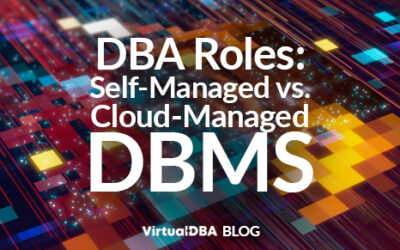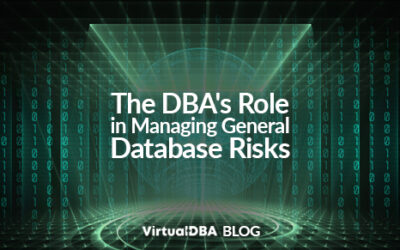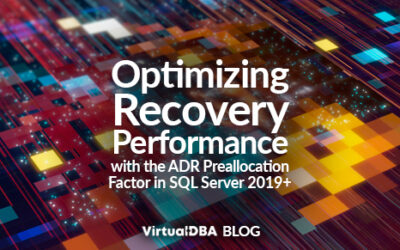Database Administrators (DBAs) are on the front lines of protecting sensitive data. As custodians of organizational information, they play a critical role in safeguarding data security and privacy. This blog post will delve into the specific data security and privacy...
Welcome to our blog, which is more than just a record of our experiences. It’s a resource.
Our blog is an invaluable resource for anyone struggling with the challenges of managing a database, applications, or clouds.
We understand the difficulties involved in troubleshooting, building, improving, securing, and operating these platforms,
and we’re here to share our insights and expertise with you. Browse through our collection of blog posts below,
and don’t hesitate to leave your comments and feedback.
DBA Roles: Self-Managed vs. Cloud-Managed DBMS
Our previous post outlined the fundamental differences between the DBA's role in self-managed and cloud-managed DBMS environments. Let's delve deeper into the complexities and nuances of each role. Infrastructure and Control Self-managed DBMS: DBAs have complete...
DBA Risk Management: Self-Managed vs. Cloud-Managed DBMS
Database Administrators (DBAs) play a critical role in safeguarding both self-managed and cloud-managed database management systems (DBMS). While the specific risks and challenges differ between the two environments, the core responsibilities of a DBA remain essential...
The DBA’s Role in Managing Specific Cloud-Managed DBMS Risks
As organizations increasingly adopt cloud-based solutions, the role of Database Administrators (DBAs) is evolving. While the core responsibilities remain similar, the specific risks associated with cloud-managed DBMS require a unique skill set and approach. This blog...
The DBA’s Role in Managing Specific Self-Managed DBMS Risks
Database Administrators (DBAs) play a pivotal role in safeguarding self-managed database management systems (DBMS). This blog post will delve into the specific risks associated with self-managed DBMS and how DBAs can effectively manage them. Understanding Self-Managed...
The DBA’s Role in Managing General Database Risks
Database Administrators (DBAs) are the guardians of an organization's digital assets. Their role extends far beyond routine maintenance and troubleshooting. A critical aspect of their responsibilities is managing the general risk factors that threaten database...
Mitigating the Unknown: The Importance of Supply Chain Risk Management
Organizations rely heavily on third-party vendors and suppliers to deliver goods and services in today's interconnected global economy. While these partnerships drive efficiency and innovation, they also introduce significant risks. Supply chain risk management is...
Understanding Privacy Impact Assessments (PIAs)
Organizations must prioritize safeguarding personal information in an era marked by increasing data privacy regulations and a growing public consciousness about data protection. The Privacy Impact Assessment (PIA) is a crucial tool in this endeavor. This blog post...
Optimizing Recovery Performance with the ADR Preallocation Factor in SQL Server 2019+
The Role of the Persistent Version Store (PVS) The PVS is the heart of ADR. It acts as a dedicated storage area for data versions used for faster recovery. Imagine a timeline for your data – ADR captures snapshots at specific points in this timeline, allowing you to...
Choosing the Right Tool for the Job: A Deep Dive into Risk Assessment Methodologies
Our previous post discussed the critical importance of conducting a comprehensive risk assessment for your database management system (DBMS). A vital component of this process is selecting the appropriate risk assessment methodology. This blog post will delve into...










